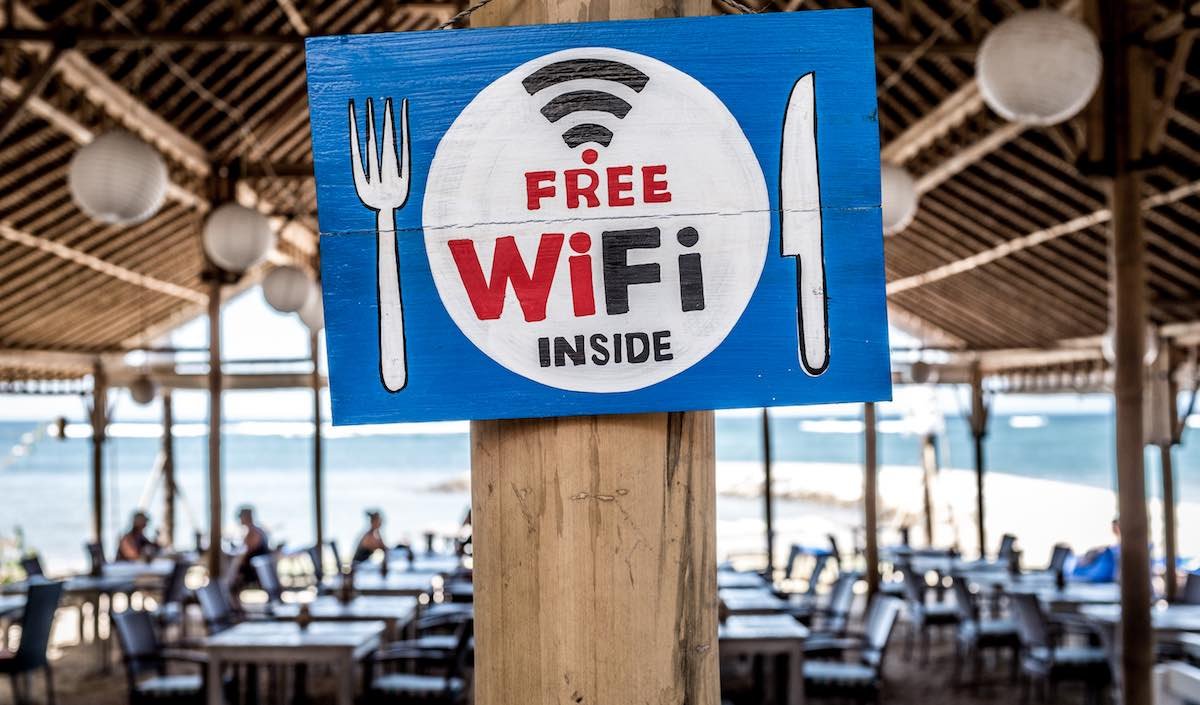How does WiFi work? Why is it called WiFi? This list of baffling WiFi facts will enlighten you
15 things you didn’t know about WiFi

What is your home without WiFi? How about your place of work? The airport? WiFi is a thing we almost take for granted these days, yet it’s one of the few things we can’t live without.
We’re big fans of WiFi. This shouldn’t come as a surprise since WiFi, just like Airtame, is a cable killer. But what do you actually know about WiFi? Take a look at all of these awesome WiFi facts we’ve compiled and check if you’re up to date.
1. WiFi could be older than you are
The group that would develop IEEE 802.11, later marketed as WiFi, met up to discuss the shape of the invention in September 1990. That’s almost 30 years ago.
2. The name doesn’t actually mean anything
You might have heard of the IEEE 802.11, but if not, here’s a recap: IEEE 802.11 refers to the set of standards that define communication for wireless local area networks.
IEEE stands for Institute of Electrical and Electronics Engineers. The number 802.11 refers to the methods and protocols of sending network information without any of the annoying cables. In short, it’s pretty geeky stuff.
It’s not a very catchy name, so with the help of a brand-consulting firm, the technology was instead marketed as ‘Wi-Fi’ in 1999. WiFi doesn’t actually mean anything, but we can all agree it’s a lot easier to remember. It is not, as commonly thought, an abbreviation for “Wireless Fidelity.”
The original term was ‘Wi-Fi’ with a hyphen, but like most hyphenated words, the use of the punctuation mark dissipates in time when the phrase is taken into common parlance. We like WiFi, but if you’re a bigger fan of Wi Fi or wifi, you’re (wi)fine too!
3. There are more than 9 billion WiFi devices in the world
It was estimated that more than 9 billion WiFi-enabled devices would be in use worldwide at the end of 2017. That number is likely a lot higher now, just a year later. But it makes sense. Just think about the different devices you have – and you probably have more than one.

4. WiFi uses radio waves
Let’s start with the basics. WiFi is a technology that uses radio waves to transfer information from one electronic device to the other. It’s what makes it possible for your computer to access the internet – without cables, which is the best fact of them all to us.
5. WiFi is very susceptible to interference
There’s nothing more frustrating than trying to stream a movie that keeps buffering, right?
The drop in your signal strength could be caused by interference. WiFi uses radio waves to send a signal, but they often bump paths with other radio waves at similar frequencies. With 9 billion WiFi devices in use, that’s no surprise.
Some of the sources that cause interference with WiFi networks include smart TVs, microwaves, cellphones, Bluetooth-enabled devices or even a fish tank. Different barriers may also cause interference, but whereas wood isn’t too bad, metal is sure to stop your signal.
6. Reduce interference by unplugging other devices
Your WiFi likes to be the only power in play, at least when it comes to interference.
Reduce interference by turning off and unplugging electronic devices such as TVs, Bluetooth devices, printer, baby monitors – and that microwave of yours as well! You could also change channels on your wireless network or move your WiFi closer to the computer.
Read more about how to improve your WiFi connection when using Airtame.
7. The best WiFi blocker is YOU
Water is a great signal blocker. Seeing as you’re made up of 75% water, if you’re sitting between your router and your computer, your body can significantly lower the strength of your WiFi signal. Good thing you’re not made of metal though because as we specified above, metal is a better blocker than both wood and water.
8. Doughnut-shaped signals are a thing
If you have an antenna on your router, the radio frequency energy that radiates from it looks a lot like a doughnut. In reality, you can’t really see a doughnut protruding from your router, but the thought of a doughnut-shaped energy field sounds delicious, right?
9. WiFi frequencies are different
WiFi transmits at frequencies of 2.4GHz or 5GHz and the frequencies for WiFi are much higher than those for cellular transmission. Higher frequencies, in short, mean that signals can carry more data.
Generally speaking, you give up range in exchange for more data, and that’s amazing if you care about digital signage. What would you choose?

10. WiFi is more important than breakfast
Speaking of doughnuts, breakfast is the most important meal of the day. So our parents have told us. Red Roof Inn, the US hotel chain, conducted a survey together with Research+Data Insights that asked 800 economy travelers how important different amenities are to them.
The survey concluded that in-room WiFi is more important to travelers than good location, parking or even complimentary breakfast. 80% of the travelers even stated that they would feel more amicable towards a hotel if complimentary WiFi is included.
So if you plan to open a hotel any time soon, remember that high-speed complimentary WiFi will convince guests easier than oceanview or a tasty brunch.
11. There are several different kinds of WiFi
Alright, so we taught you earlier what 802.11 means, but there are actually several other versions out there. The original is from 1997 and not in use anymore, but since then we’ve had 802.11b, 802.11a, 802.11g, 802.11n, 802.11ac, and 802.11ad.
It’s quite an alphabet soup to digest, but we can say that in general, newer versions are backwards compatible with older versions, but not the other way round. For newer versions, there are several things to consider such as speed, range, and cost.
12. WiFi originated in Hawaii
Well, sort of at least. Not everyone agrees with this fact, but the fact still remains that an early predecessor of WiFi was launched in 1971 in Hawaii and was called The ALOHAnet. It was a pioneering computer networking system developed at the University of Hawaii.
Two decades later, NCR Corporation and AT&T Corporation invented WaveLAN, which is considered the true precursor to WiFi. In 1997, the first version of IEEE 802.11 wireless protocol was released.
While we agree that there’s some controversy surrounding this fact, we don’t have anything bad to say about the name ALOHAnet.
13. Lithuania has the fastest WiFi
You probably wouldn’t have guessed that, right? Well, according to Rotten Wifi, Lithuania has the fastest WiFi in the world at 16.6 Mbps as per November 2016. The Baltic region country tops the list over Singapore (15.1), Switzerland (13.8), Denmark (12), and the United Kingdom (11.7). The United States ranked 19th.

14. IoT and WiFi aren’t a perfect match
The Internet of Things or simply IoT is the concept of connecting all things in the world to the internet. For some IoT applications like in-house energy management, surveillance or home appliances, WiFi works just fine.
But that’s not the case with all IoT applications. Standard WiFi (based on 802.11a/b/g/n/ac) has some limitations in both range and energy efficiency. So in home environments or campuses where there are power outlets for all IoT applications, WiFi is still a go-to choice.
Other areas such as outdoors will require a more IoT-friendly connectivity. But who knows, maybe that’s already underway?
15. Free WiFi for all EU citizens could be happening
WiFi4EU (what a catchphrase!) is a project by the European Commission that offers vouchers worth €15,000 for EU municipalities to set up WiFi hotspots in public spaces. These include libraries, parks, and museums among others. But don’t take our word for it:
We propose today to equip every European village and every city with free wireless internet access around the main centers of public life by 2020
Jean-Claude Juncker, President of the European Commission
If EU municipalities decide to benefit from this particular EU funding, every European city could have free WiFi soon. So now you know where to travel next.